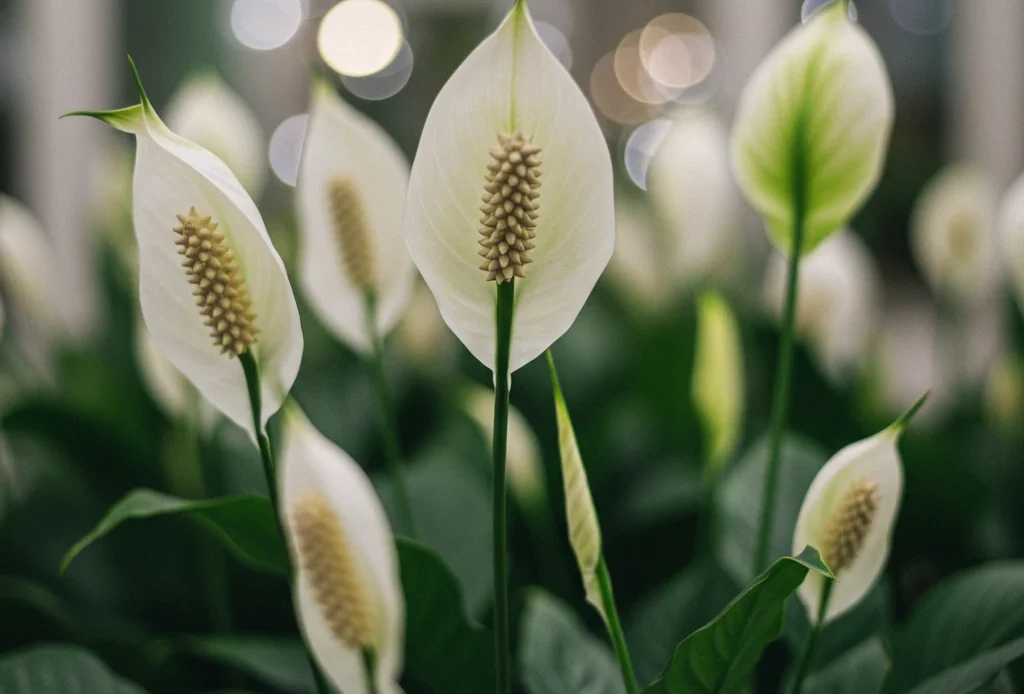
Introduction to Peace Lily Care
So, you got yourself a peace lily? Great choice! This elegant, air-purifying beauty isn’t just a houseplant; it’s a statement. But before you start calling yourself a plant parent extraordinaire, let’s make sure you know how to keep your leafy friend happy.
Do you water it every day? (Nope!) Does it need sunlight? (Kind of!) What’s the secret to those stunning white blooms? (Keep reading—we’ve got the goods!)
Whether you’re a total beginner or just need a few pro tips, we’re diving deep into peace lily care. Trust us, your plant will thank you!
Table of Contents
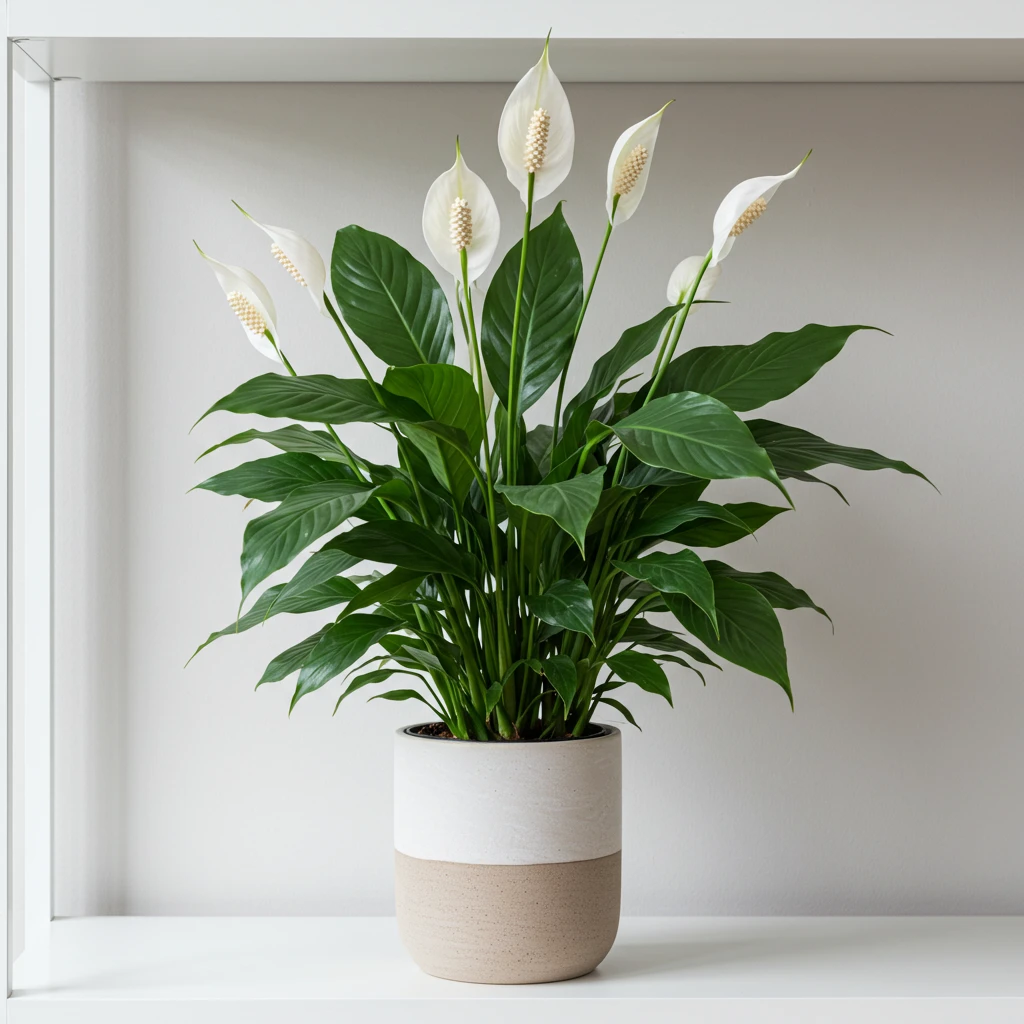
Essential Care for a Thriving Peace Lily
Want your Peace Lily to thrive, not just survive? It’s all about balance! From watering to light, soil to humidity, we’ll break down exactly what your plant needs—no fluff, just the good stuff. Let’s get growing!
Watering Needs
Peace Lilies love moisture, but soggy roots? Big no-no! Water when the top inch of soil feels dry, usually once a week. If the leaves droop, that’s your plant’s way of saying, “Hey, I’m thirsty!” Use filtered or distilled water to avoid brown leaf tips caused by chlorine and fluoride.
Light & Location
Bright, indirect light is the sweet spot! Too much sun scorches the leaves, while too little makes them leggy with fewer blooms. A spot near a north- or east-facing window is perfect. If your peace lily isn’t flowering, try giving it a little more light but no harsh rays!
Temperature & Humidity Requirements
Think tropical vibes! Keep temps between 65–80°F (18–27°C) and avoid cold drafts. Peace lilies also love humidity; mist them occasionally or place a tray of water and pebbles nearby. If your home is extra dry, a humidifier can keep those lush leaves from crisping up.
Choosing the Right Soil & Fertilizer
Light, airy soil is key! A mix of peat, perlite, and pine bark ensures good drainage while holding enough moisture. Feed monthly with a balanced liquid fertilizer in spring and summer, but go easy; too much can cause brown leaf tips. In winter? Let your plant take a feeding break.
Pruning & Maintenance
Snip off yellow or wilted leaves at the base to keep your plant looking fresh. Wipe the leaves with a damp cloth to remove dust and boost photosynthesis. If your peace lily outgrows its pot, repot it in fresh soil every 1–2 years; your plant will thank you with vibrant growth!
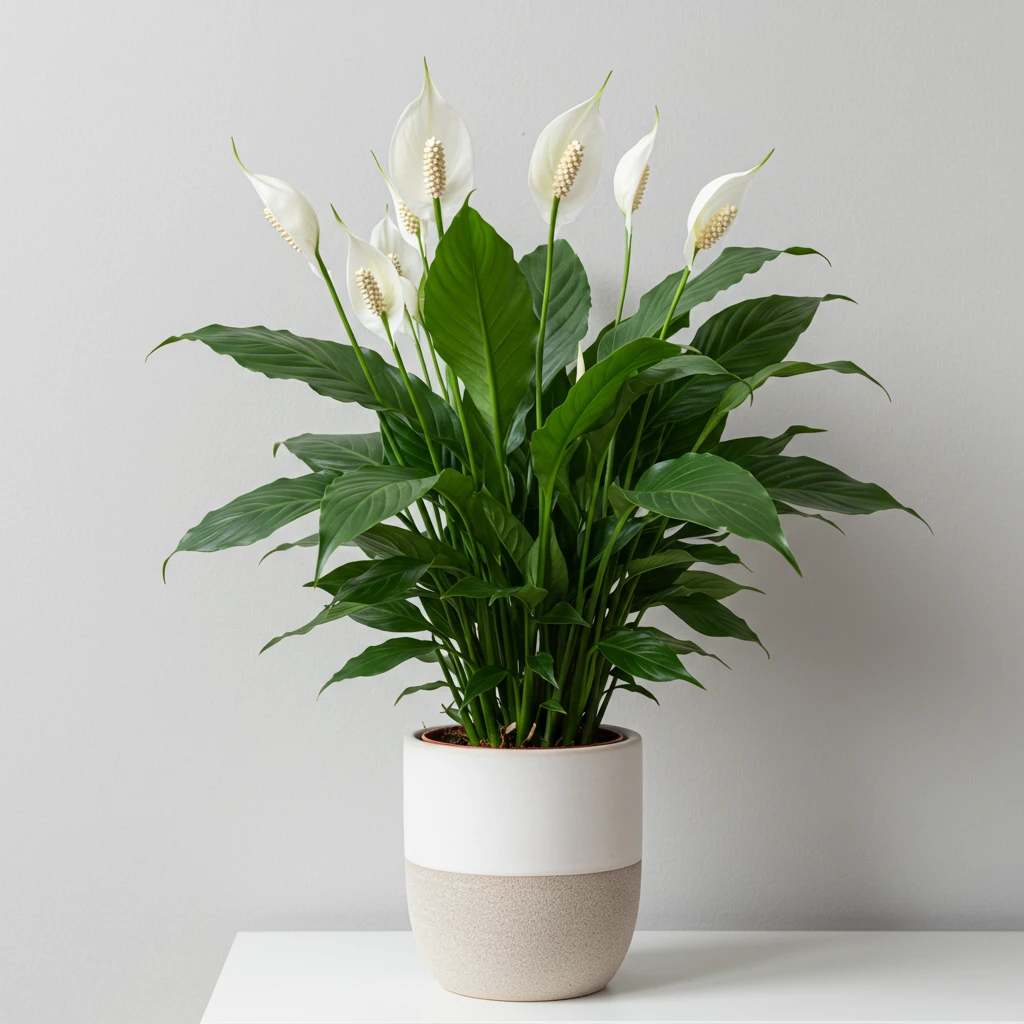
Repotting & Propagation
Knowing how to care for a peace lily isn’t just about watering and light—it’s also about giving it room to grow! Whether your plant is root-bound or you want to multiply your collection, repotting and propagation are essential skills. Let’s dive into the details!
When & How to Repot a Peace Lily
If roots are peeking through the drainage holes or the soil dries out too quickly, it’s time for a new home! Repot your peace lily plant every 1–2 years in early spring. Choose a pot 1–2 inches larger with fresh, well-draining soil. Gently loosen the roots, place your plant in the new pot, and water thoroughly. Keep it in bright, indirect light to help it adjust.
How to Propagate a Peace Lily
Want more Peace Lilies? The easiest method is division! When repotting, gently separate healthy offshoots with roots attached. Plant them in their own pots with fresh soil, water lightly, and keep them in ideal Peace Lily light requirements—bright but indirect light. Avoid fertilizing for a month to let the roots settle. That’s how to care for a peace lily plant indoors and expand your collection!
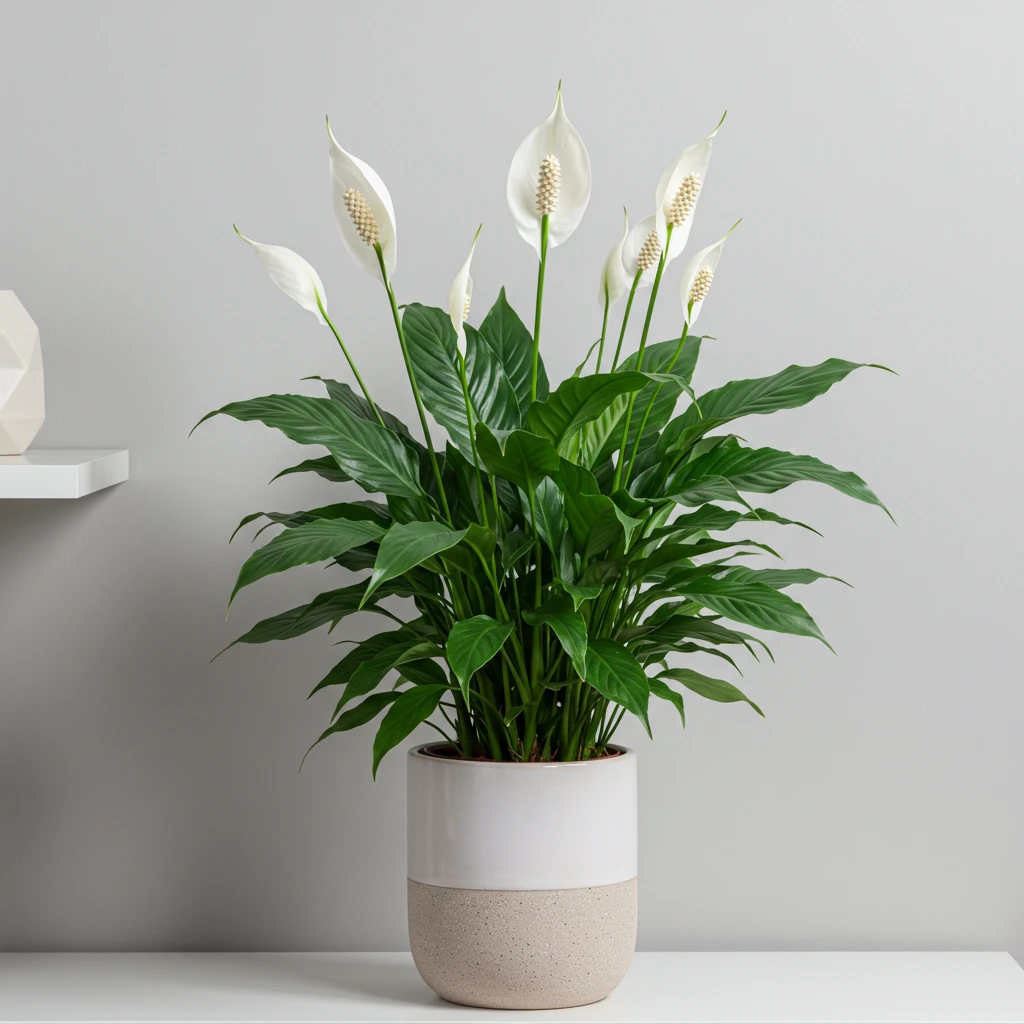
Common Problems & Solutions
Even with the best peace lily plant care, issues can pop up—droopy leaves, brown tips, or a stubborn plant that refuses to bloom. Don’t worry! With the right fixes, your peace lily will be thriving again in no time. Let’s troubleshoot!
Troubleshooting Peace Lily Issues
- Drooping leaves? Likely underwatering—give your plant a drink and watch it perk up! But if the soil is soggy, you might be overwatering.
- Brown tips? Tap water chemicals could be the culprit. Use filtered or distilled water to keep leaves lush.
- Yellowing leaves? Older leaves naturally fade, but widespread yellowing could mean too much water or poor drainage.
- Wilting despite proper watering? Check for root rot—if the roots are mushy and dark, trim the damaged parts and repot in fresh soil.
Is Your Peace Lily Not Blooming?
A healthy Peace Lily should bloom, but if yours isn’t, check its light requirements! These plants need bright, indirect light; too much shade, and they’ll skip flowering. Over-fertilizing can also reduce blooms, so use a balanced fertilizer only once a month in spring and summer. Finally, patience is key! Young plants may take time to mature before producing those iconic white flowers. That’s how to care for a peace lily plant indoors and enjoy beautiful blooms!
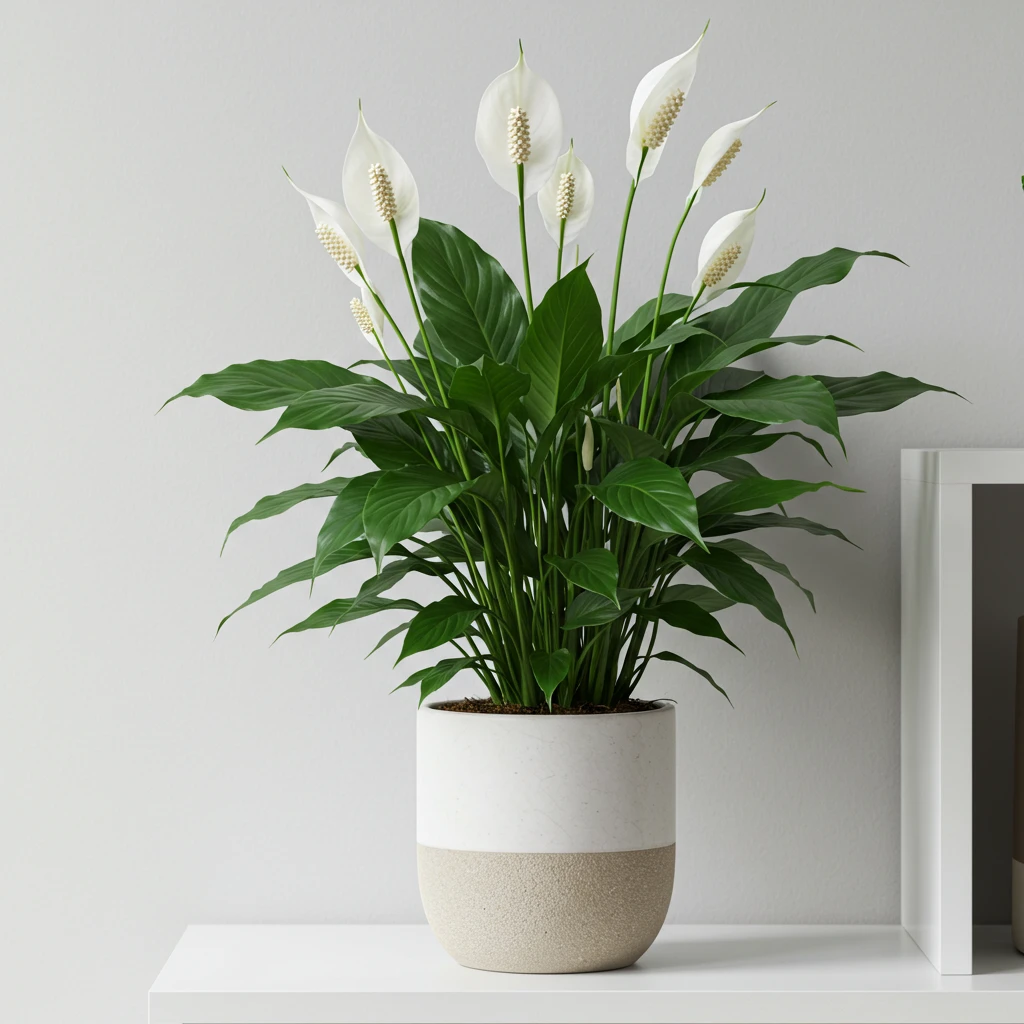
Additional Considerations
Beyond the basics of how to care for a peace lily, there are a few more things you should know! From potential toxicity to the best varieties to grow, these extra details will help you make the most of your peace lily plant care.
Is a Peace Lily Toxic?
Yes! While beautiful, peace lilies contain calcium oxalate crystals, which can be toxic if ingested by pets or small children. Symptoms include drooling, mouth irritation, and digestive upset. Keep your plant out of reach, and if exposure occurs, contact a vet or doctor. For a safer alternative, consider pet-friendly houseplants instead.
Best Peace Lily Varieties to Grow
Not all Peace Lilies are the same! If you want classic elegance, Spathiphyllum ‘Mauna Loa’ is a popular choice. For larger, dramatic leaves, try ‘Sensation’—the biggest Peace Lily variety. If space is tight, ‘Petite’ is a compact option. Regardless of the variety, the same peace lily light requirements and care tips apply to keep them thriving!
Final Thoughts on Peace Lily Care
Caring for a peace lily is easier than you think! With the right balance of water, light, and occasional TLC, your plant will reward you with lush green leaves and elegant white blooms. Now that you know how to care for a peace lily plant indoors, you can enjoy a thriving, air-purifying beauty in your home.
So, whether you’re troubleshooting droopy leaves, repotting, or picking the perfect variety, you’ve got all the tools for expert Peace Lily plant care. Keep nurturing, keep growing, and most importantly—enjoy your Peace Lily’s effortless charm!
FAQ
What’s the best way to care for a peace lily indoors?
To care for a peace lily indoors, provide bright, indirect light and water it when the top inch of soil feels dry. Use well-draining soil and ensure the plant is not exposed to drafts or extreme temperatures. Regularly clean the leaves to keep them dust-free and promote healthy growth.
Is it necessary to trim brown tips from a peace lily?
Yes, trimming brown tips is recommended to maintain the plant’s appearance and prevent further damage. Use clean, sharp scissors to remove the affected areas, cutting just above the damaged portion. This also helps redirect the plant’s energy to healthier growth.
Where is the ideal location for a peace lily?
The ideal location for a peace lily is a spot with bright, indirect light, such as near a north- or east-facing window. Avoid placing it in direct sunlight, as this can scorch the leaves. It should also be kept in a space with moderate humidity and consistent temperatures.
How frequently should you water a peace lily?
Water your peace lily when the top inch of soil feels dry to the touch, typically every 1-2 weeks. Ensure the soil is moist but not waterlogged, as overwatering can lead to root rot. Adjust the watering frequency based on the humidity and temperature of your indoor environment.
What conditions help a peace lily flourish?
Peace lilies thrive in temperatures between 65–80°F (18–27°C) with high humidity. They prefer well-draining soil and bright, indirect light, along with occasional feeding during the growing season. Keeping the plant in a stable environment, free from drafts or extreme heat, will encourage optimal growth.
Check out our latest article for more insights, and follow us on Facebook for updates! And connect with us on Instagram, Pinterest, and YouTube for more inspiration!
By : Mark


